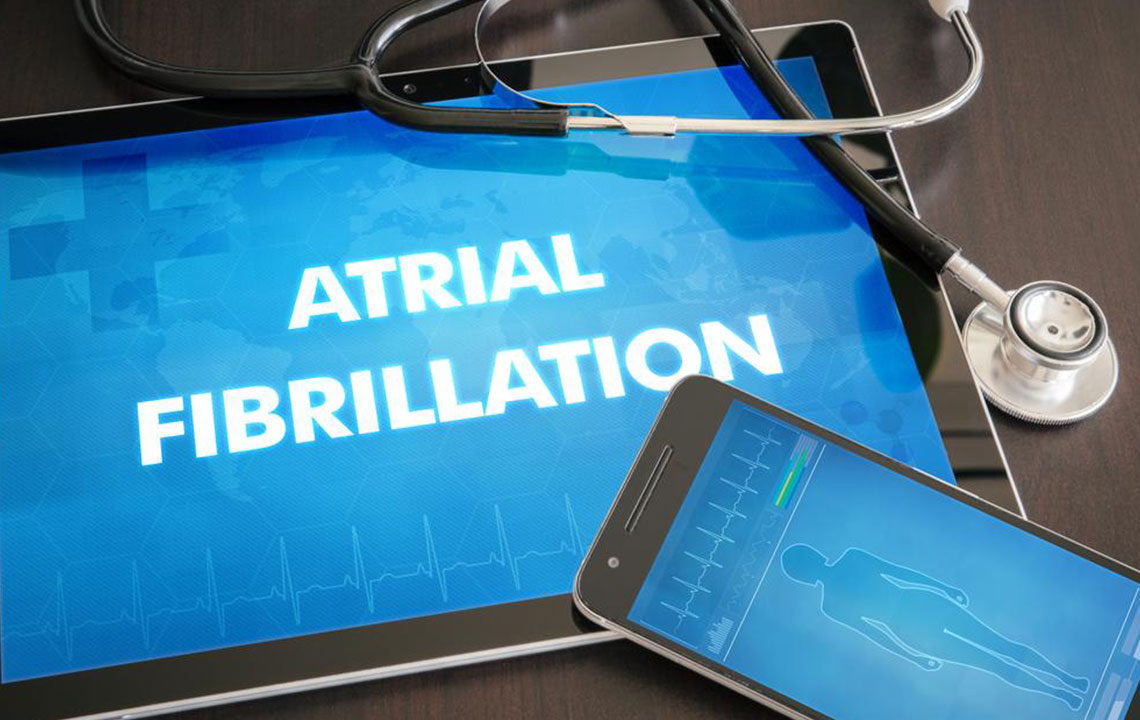Comprehensive Guide to Managing Atrial Fibrillation and Safeguarding Heart Health
This comprehensive guide explores effective strategies for managing atrial fibrillation, emphasizing early diagnosis, medication, surgical options, and lifestyle changes. It aims to educate readers on preventing serious complications like stroke and heart failure while offering practical tips for heart health. By understanding the different types of AFib and the latest treatment advances, patients can better manage their condition and lead healthier lives.

Effective Strategies for Managing Atrial Fibrillation and Protecting Your Heart
Atrial fibrillation (AFib) stands out as one of the most prevalent arrhythmias impacting millions worldwide. This heart condition, characterized by an irregular and often rapid heartbeat, can sharply increase the risk of severe complications like stroke, heart failure, and blood clots. Due to its often subtle or asymptomatic nature, many individuals remain unaware of their condition until it is detected during routine medical evaluations or when serious symptoms emerge. Understanding the intricacies of AFib, recognizing its signs, and knowing available treatment options are essential steps toward better heart health and overall well-being.
Recognizing the Signs and Symptoms of Atrial Fibrillation
Many individuals with AFib may not immediately notice symptoms due to the condition's sometimes silent nature, which underscores the importance of regular health check-ups. However, when symptoms do manifest, they can be quite diverse and sometimes confusing, warranting prompt medical attention. Typical signs and symptoms include:
Chest Discomfort: Feelings of pressure, tightness, or pain in the chest area, which can sometimes be mistaken for other cardiac issues.
Dizziness and Lightheadedness: Episodes of feeling faint or unsteady, especially during physical exertion.
Fainting: Sudden loss of consciousness, often linked to irregular heartbeats affecting brain perfusion.
Extreme Fatigue: Unusual tiredness that persists despite adequate rest, impacting daily activities.
Reduced Physical Stamina: Decreased ability to perform workouts or physical tasks, often unnoticed until activity increases.
Irregular Heartbeats or Palpitations: The sensation of fluttering, pounding, or irregular thumping within the chest, which may come and go.
If you experience any of these symptoms regularly or notice irregularities in your heartbeat, timely consultation with a healthcare provider is crucial. Early diagnosis can significantly improve management outcomes and prevent severe complications.
Understanding the Types of Atrial Fibrillation
AFib isn't a one-size-fits-all condition; it exists in several forms, each with distinct characteristics and treatment considerations:
Paroxysmal AFib: Episodes of irregular heartbeat that come and go spontaneously, typically resolving within 24 to 48 hours without intervention. These intermittent episodes can sometimes be triggered by stress, caffeine, or alcohol.
Persistent AFib: Episodes last longer than seven days and often require medical intervention such as medication or electrical cardioversion to restore normal rhythm.
Long-standing Persistent AFib: The condition persists for over a year, often necessitating long-term management strategies, including ongoing medication or ablation procedures.
Permanent AFib: When the abnormal rhythm becomes permanent and cannot be fully corrected, treatment focuses on controlling symptoms and preventing complications.
Modern Approaches to Managing Atrial Fibrillation
Effective management of AFib hinges on a comprehensive approach tailored to the patient's specific type and severity of the condition. These strategies aim to control heart rhythm, prevent blood clots, and mitigate risks of stroke or heart failure. Treatment modalities broadly fall into medication therapy, invasive procedures, and lifestyle adjustments.
Medication-Based Treatments for AFib
Medications form the backbone of many AFib management plans. They help regulate heartbeat, prevent clot formation, and improve quality of life. It's crucial, however, that these medications are used under strict medical supervision, as abrupt discontinuation can pose serious health risks.
Anticoagulants (Blood Thinners): To prevent stroke caused by blood clots, drugs such as warfarin, dabigatran, rivaroxaban, edoxaban, and apixaban are commonly prescribed. Aspirin may sometimes be used, though it is less effective for stroke prevention in AFib patients.
Rate Control Medications: Beta blockers like atenolol and bisoprolol, calcium channel blockers such as diltiazem and verapamil, and the cardiac glycoside digoxin help control the heart rate, especially during episodes of rapid or irregular heartbeat.
Rhythm Control Medications: Anti-arrhythmic drugs like amiodarone may be utilized to maintain normal heart rhythm and reduce the frequency of AFib episodes.
Surgical and Procedural Interventions
While medications are effective, some patients may require invasive procedures, especially when medications don't adequately control symptoms or if the risk of thromboembolism remains high.
Pacing Devices (Pacemaker Implantation): A device surgically inserted under the skin to regulate and maintain an optimal heart rate, especially useful in cases where conduction abnormalities are present.
Maze Procedure: A specialized surgical technique where surgeons create scar tissue in specific areas of the atria. This scar tissue disrupts abnormal electrical pathways, restoring normal rhythm. The procedure can be performed via traditional open-heart surgery or minimally invasive approaches.
Catheter Ablation: A less invasive technique where catheters are threaded into the heart to destroy small areas of tissue causing irregular signals, effectively resetting normal electrical pathways.
Preventative Measures and Lifestyle Modifications
Beyond medical interventions, lifestyle changes play a crucial role in managing AFib and improving overall heart health. These modifications can reduce the frequency of episodes and enhance treatment effectiveness.
Healthy Diet: Emphasize fruits, vegetables, whole grains, and lean proteins while limiting processed foods, saturated fats, and excessive sodium intake.
Regular Exercise: Engage in moderate activities, such as walking or swimming, after consulting with your healthcare provider. Physical activity can help control weight, reduce blood pressure, and improve cardiovascular health.
Weight Management: Maintaining a healthy weight lowers the strain on your heart and reduces AFib episodes.
Limit Alcohol and Caffeine: Excessive consumption can trigger episodes; moderation is key.
Manage Stress: Techniques such as meditation, yoga, and mindfulness can help reduce stress-induced arrhythmias.
Avoid Smoking: Tobacco use significantly increases cardiovascular risks and worsens AFib outcomes.
Importance of Regular Monitoring and Follow-up
Since AFib is a chronic and often progressive condition, continuous monitoring is essential for effective management. Regular check-ups allow healthcare providers to track the effectiveness of treatments, adjust medications, and detect any early signs of complications.
Advances in wearable technology, such as smartwatches with heart rate monitoring, offer patients an easy way to keep track of irregularities and alert healthcare professionals promptly. At-home monitoring devices and periodic ECGs contribute significantly to personalized treatment plans.
Conclusion: A Proactive Approach to Heart Health
Managing atrial fibrillation requires a proactive, multifaceted approach combining medical treatment, lifestyle modifications, and ongoing health monitoring. With advances in medical technology and an increased understanding of the condition, patients now have more tools than ever to control their symptoms and prevent serious complications. Early detection, adherence to prescribed therapies, and healthy lifestyle choices are key to maintaining a strong, healthy heart and improving quality of life.





